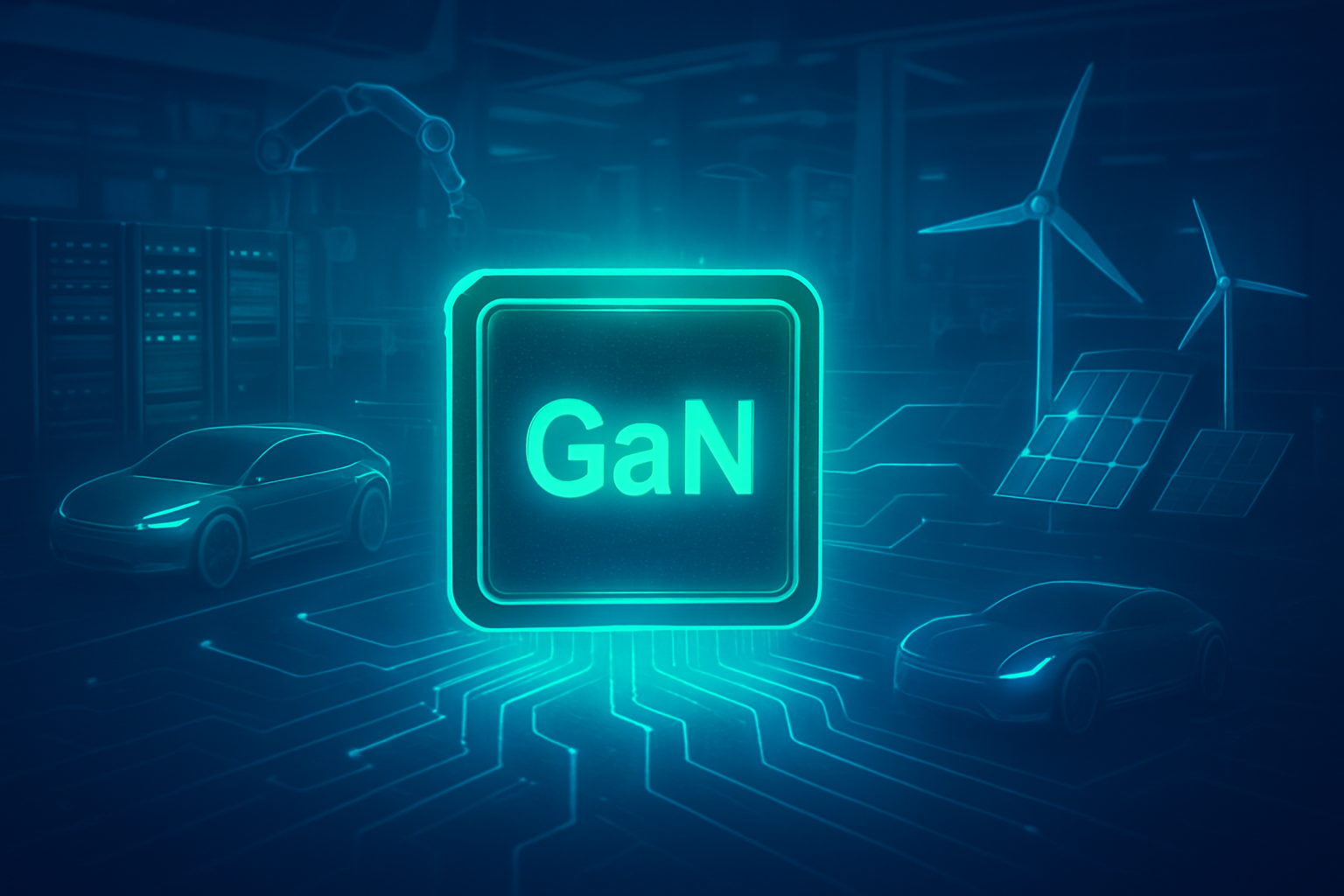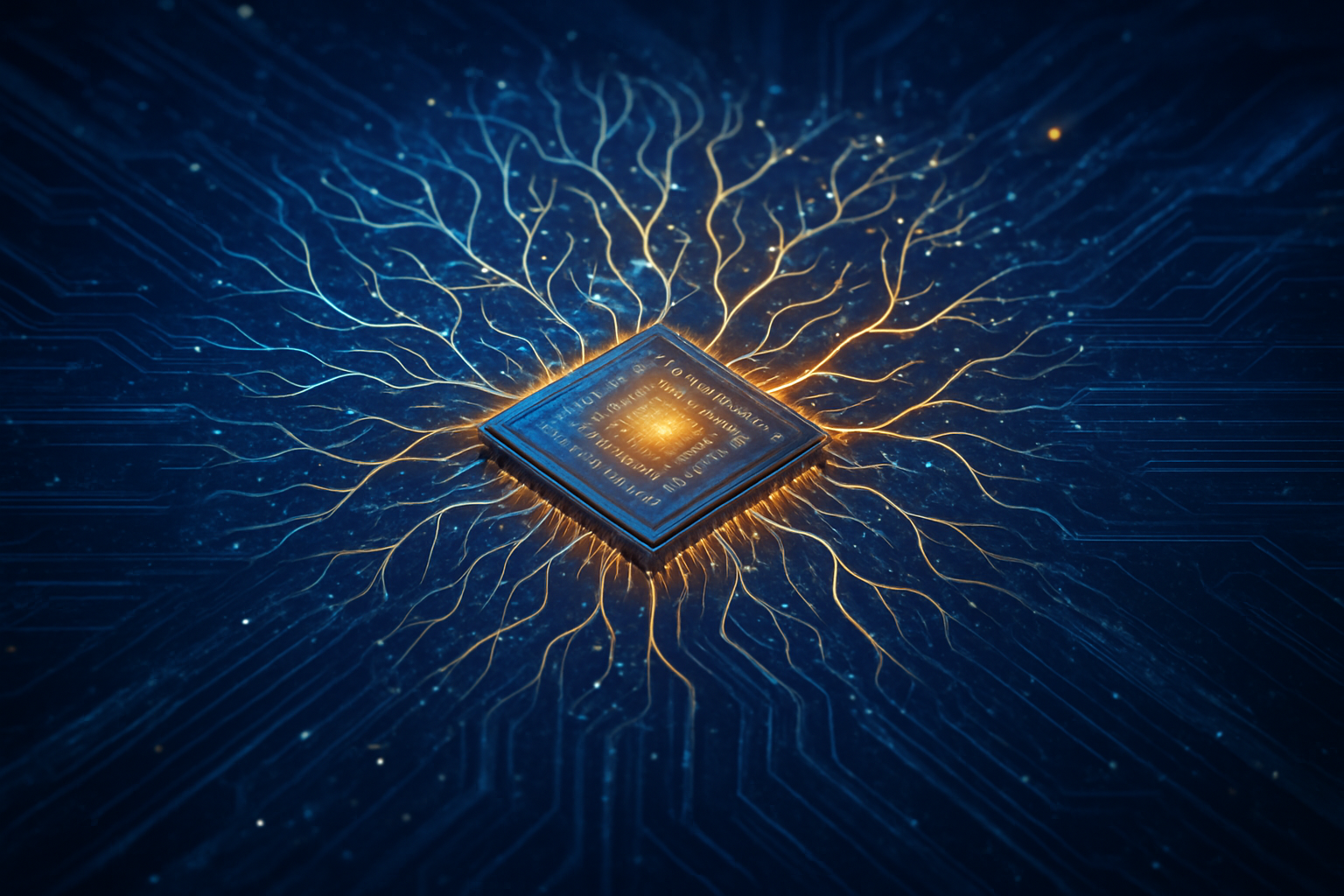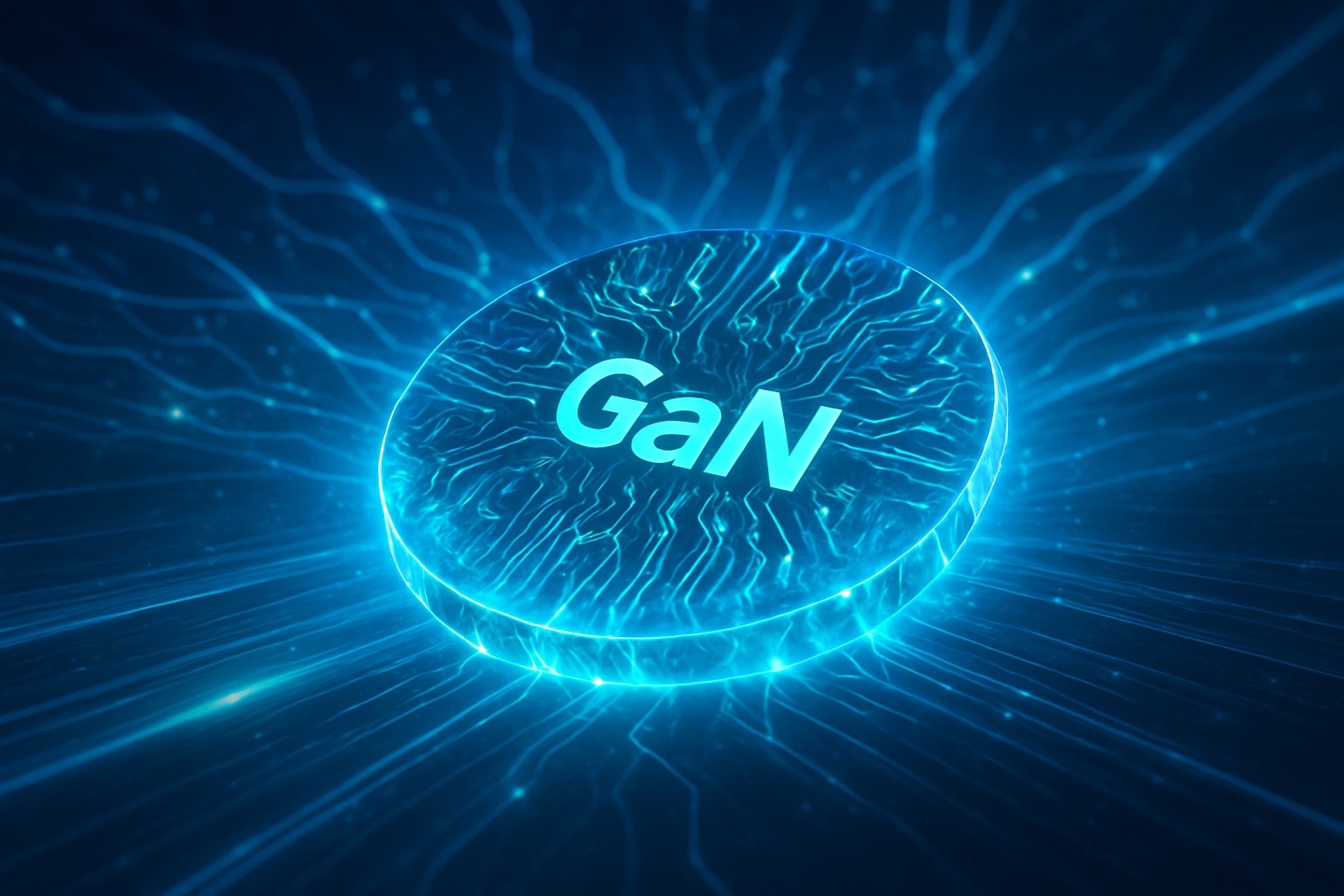The burgeoning demand for Artificial Intelligence (AI) technologies is forging an undeniable and profound link with the market valuation and performance of the world's leading semiconductor manufacturers. At the forefront of this revolution stands Taiwan Semiconductor Manufacturing Company (TSMC) (NYSE: TSM), the undisputed titan of chip fabrication. As AI permeates every facet of technology, from hyperscale data centers to advanced edge devices, the imperative for sophisticated processing power has cast a spotlight on the foundries capable of producing these intricate silicon brains, making companies like TSMC indispensable to the future of AI.
This direct correlation highlights AI as not merely a growth driver but the primary catalyst reshaping the semiconductor landscape in 2025. The industry is witnessing a surge in revenue, market capitalization, and strategic importance, with TSMC's financial performance serving as a potent barometer of this AI-driven expansion. With AI chips alone constituting a significant portion of TSMC's revenue and its stock soaring to unprecedented levels, the narrative is clear: the quest for artificial intelligence is fueling an unprecedented gold rush in the silicon valleys of the world.
The Silicon Crucible: TSMC's Technical Prowess and the AI Revolution
The AI revolution is fundamentally transforming the semiconductor industry, creating an insatiable demand for advanced chips that can handle the immense computational loads required by modern AI models. This demand is not merely for more chips, but for increasingly specialized and powerful silicon, a niche where TSMC's technical capabilities shine. The company's leadership in advanced process technologies, particularly its 3-nanometer (nm) and 5nm nodes, is critical for manufacturing the cutting-edge AI accelerators and high-performance computing (HPC) chips that power the latest innovations from industry giants like NVIDIA (NASDAQ: NVDA), Apple (NASDAQ: AAPL), and AMD (NASDAQ: AMD).
These advanced nodes enable the creation of chips with higher transistor density, improved power efficiency, and superior performance—all essential attributes for AI workloads ranging from complex neural network training to real-time inference at the edge. The technical specifications of these chips are staggering; they often integrate specialized neural processing units (NPUs), high-bandwidth memory (HBM), and intricate interconnect architectures designed to accelerate parallel processing. This differs significantly from previous approaches that relied more heavily on general-purpose CPUs; modern AI demands highly optimized hardware tailored for matrix multiplications and tensor operations. Initial reactions from the AI research community and industry experts have underscored TSMC's strategic importance, recognizing its foundries as the "manufacturing foundation of the AI era." They acknowledge that without TSMC's unparalleled fabrication capabilities, the pace of AI innovation would be severely hampered, making its technological advancements a critical bottleneck—or enabler—for the entire AI ecosystem.
TSMC's continuous investment in research and development, pushing the boundaries of Moore's Law, allows it to consistently deliver process technologies that are a generation ahead of many competitors. This technological lead translates into a significant competitive advantage, as AI companies seek to maximize performance per watt and minimize latency in their AI deployments. The company's ability to reliably produce high yields of these complex chips further solidifies its position, as the cost and time-to-market for AI hardware are paramount. This technical superiority is not just about smaller transistors; it encompasses innovative packaging solutions like CoWoS (Chip-on-Wafer-on-Substrate) that enable the integration of multiple dies and HBM stacks into a single, high-performance package, further boosting the capabilities of AI accelerators.
The impact of these technical specifications is evident in TSMC's financial performance. AI-led HPC demand, particularly for chips based on its 3nm and 5nm technologies, is a primary driver of the company's projected 30% annual revenue growth for 2025. In the second quarter of 2025, AI chips alone constituted approximately one-third, or $10 billion, of TSMC's $31.7 billion revenue, with HPC applications accounting for 60% of its total revenue. This demonstrates the direct and substantial contribution of advanced AI chip manufacturing to TSMC's bottom line, validating its technical investments and strategic focus.
AI's Indispensable Partner: How TSMC Shapes the Competitive Landscape
The profound influence of TSMC's manufacturing prowess extends directly to the competitive dynamics of the entire AI industry, profoundly affecting tech giants, specialized AI companies, and nascent startups alike. Companies that stand to benefit most from TSMC's advanced capabilities are those at the bleeding edge of AI hardware design, primarily major AI labs and tech behemoths like NVIDIA (NASDAQ: NVDA), Google (NASDAQ: GOOGL), and Apple (NASDAQ: AAPL). These firms rely on TSMC to bring their sophisticated chip designs, such as NVIDIA's H100 and upcoming B200 GPUs, Google's Tensor Processing Units (TPUs), and Apple's Neural Engine-equipped A-series chips, to life with the highest performance and efficiency.
The competitive implications for major AI labs and tech companies are immense. Access to TSMC's leading-edge process nodes (3nm, 5nm) is not just an advantage; it's often a prerequisite for maintaining a competitive edge in AI development. Companies with guaranteed access to TSMC's limited advanced capacity can rapidly iterate on their AI hardware designs, integrate more complex features, and deliver higher-performing products to market faster. This creates a significant barrier to entry for smaller players or those reliant on less advanced foundries, exacerbating the concentration of power among a few dominant AI hardware providers. The strategic advantage lies not just in design, but in the ability to manufacture those designs at scale and with impeccable quality, a domain where TSMC is virtually unrivaled.
This reliance on TSMC can also lead to potential disruptions. Any supply chain constraints, geopolitical tensions affecting Taiwan, or production issues at TSMC could have cascading effects throughout the AI industry, impacting the availability and cost of critical AI hardware. However, for now, TSMC's robust operations and continuous expansion plans mitigate some of these risks. Its market positioning is one of unparalleled indispensability; analysts frequently refer to TSMC as "the single most indispensable company in the AI supply chain" and "the manufacturing foundation of the AI era." Its strategic advantages include not only its technological lead but also its strong relationships with key customers, its proprietary intellectual property, and its consistent investment in next-generation manufacturing techniques.
The impact on existing products and services is profound. AI-powered services across cloud computing, autonomous vehicles, natural language processing, and advanced robotics are all directly enabled and enhanced by the performance gains offered by TSMC-fabricated chips. For instance, the ability to train larger, more complex AI models in cloud data centers is directly tied to the availability of high-performance GPUs and accelerators. Startups aiming to develop innovative AI hardware solutions often face the challenge of securing foundry capacity that can match the performance demands of their designs, often leading them to partner with larger players who have established relationships with TSMC or to focus on niche applications that can utilize less cutting-edge, and thus more accessible, fabrication technologies. Ultimately, TSMC's role is not just as a manufacturer but as a key enabler and shaper of the competitive landscape in the rapidly evolving world of artificial intelligence.
AI's Broader Canvas: Significance, Impacts, and Future Outlook
The symbiotic relationship between surging AI demand and TSMC's (NYSE: TSM) semiconductor dominance fits seamlessly into the broader AI landscape and current technological trends, serving as a powerful indicator of the industry's trajectory. This phenomenon underscores a fundamental shift: AI is no longer a niche application but a core driver of technological advancement, demanding specialized hardware at an unprecedented scale. It highlights the critical importance of foundational infrastructure—the silicon—in realizing the ambitious visions of artificial intelligence. This trend aligns with the industry's move towards increasingly complex models, such as large language models (LLMs) and multi-modal AI, which necessitate immense computational power and efficient processing.
The impacts of this dynamic are far-reaching. Economically, it fuels massive capital expenditure in the semiconductor sector, creating jobs, driving innovation in materials science and manufacturing processes, and bolstering the economies of regions where these advanced foundries are located. Geopolitically, TSMC's strategic indispensability, particularly given its location in Taiwan, has elevated semiconductors to a critical geopolitical asset. The fact that the U.S. alone sources 92% of its advanced chip supply from TSMC underscores the global strategic importance and potential vulnerabilities associated with this concentrated supply chain. Potential concerns include the risk of an "AI bubble" if investment outpaces tangible returns, and the environmental impact of increased energy consumption by both chip manufacturing and the AI data centers they power.
Comparing this to previous AI milestones, the current surge in demand for AI-specific silicon is reminiscent of the internet boom's impact on network infrastructure or the mobile revolution's demand for smartphone components. However, the current scale and the specialized nature of AI hardware represent a new frontier. While previous breakthroughs like deep learning in the 2010s demonstrated AI's potential, the current era is defined by widespread deployment and commercialization, moving AI from research labs to everyday applications. This transition necessitates an entirely new level of hardware support.
Looking ahead, the interplay between AI demand and semiconductor performance is expected to intensify. Near-term developments will likely see continued investment in advanced packaging technologies and further miniaturization of process nodes, pushing towards 2nm and beyond. Long-term, we can anticipate the emergence of entirely new chip architectures specifically designed for quantum computing or neuromorphic computing, which could fundamentally alter the demand landscape. Potential applications on the horizon include highly personalized AI assistants, fully autonomous systems, and breakthroughs in scientific discovery powered by AI.
However, significant challenges remain. The escalating cost of developing and manufacturing at the leading edge requires massive capital investments and highly specialized talent. Energy efficiency will become an increasingly critical factor, as will the development of robust and secure AI supply chains that are resilient to geopolitical pressures. Experts predict that while the pace of growth might moderate slightly, the underlying demand for AI-enabling hardware will not wane. Major technology companies like Meta Platforms (NASDAQ: META), Alphabet (NASDAQ: GOOGL), Amazon.com (NASDAQ: AMZN), and Microsoft (NASDAQ: MSFT) are projected to significantly increase their AI infrastructure spending by 21% in 2026, collectively investing over $400 billion. This sustained investment ensures that companies like TSMC will remain at the epicenter of technological progress for the foreseeable future.
The Indispensable Nexus: A Comprehensive Wrap-Up
The journey into 2025 has unequivocally established an indispensable nexus between the escalating global demand for Artificial Intelligence and the surging performance and market valuation of leading semiconductor manufacturers, with Taiwan Semiconductor Manufacturing Company (TSMC) (NYSE: TSM) serving as the quintessential case study. The key takeaway is clear: TSMC is not merely a beneficiary of the AI boom; it is a fundamental enabler, its advanced fabrication capabilities acting as the crucial engine driving the innovation and deployment of AI technologies worldwide. Its consistent revenue growth, soaring market capitalization, and strategic positioning underscore its role as the backbone of the AI era.
This development's significance in AI history cannot be overstated. It marks a period where the theoretical potential of AI is being rapidly translated into tangible products and services, a transformation heavily reliant on the underlying hardware infrastructure. The specialized and ever-increasing demand for advanced chips, particularly those leveraging TSMC's 3nm and 5nm process nodes, signifies a maturation of the AI industry where hardware capabilities are directly dictating the pace and scope of AI advancements. This moment will be remembered as the point where silicon became unequivocally synonymous with intelligence at scale.
Looking ahead, the long-term impact of this dynamic is expected to be profound and enduring. TSMC's continued leadership in process technology and packaging solutions ensures its pivotal role in shaping the future of AI. The ongoing arms race in AI development will continue to fuel demand for ever more powerful and efficient chips, solidifying TSMC's position at the core of the global technology ecosystem.
In the coming weeks and months, industry watchers should keenly observe several key indicators: TSMC's quarterly earnings reports for any shifts in AI-driven revenue proportions, announcements regarding new process node advancements and capacity expansions, and any statements from major AI hardware designers regarding their production roadmaps. Furthermore, the broader geopolitical landscape surrounding semiconductor supply chains will remain a critical factor to watch, as the world grapples with the strategic importance of advanced chip manufacturing. The AI revolution is in full swing, and TSMC stands firmly at its helm, charting the course for the next generation of intelligent machines.
This content is intended for informational purposes only and represents analysis of current AI developments.
TokenRing AI delivers enterprise-grade solutions for multi-agent AI workflow orchestration, AI-powered development tools, and seamless remote collaboration platforms.
For more information, visit https://www.tokenring.ai/.









